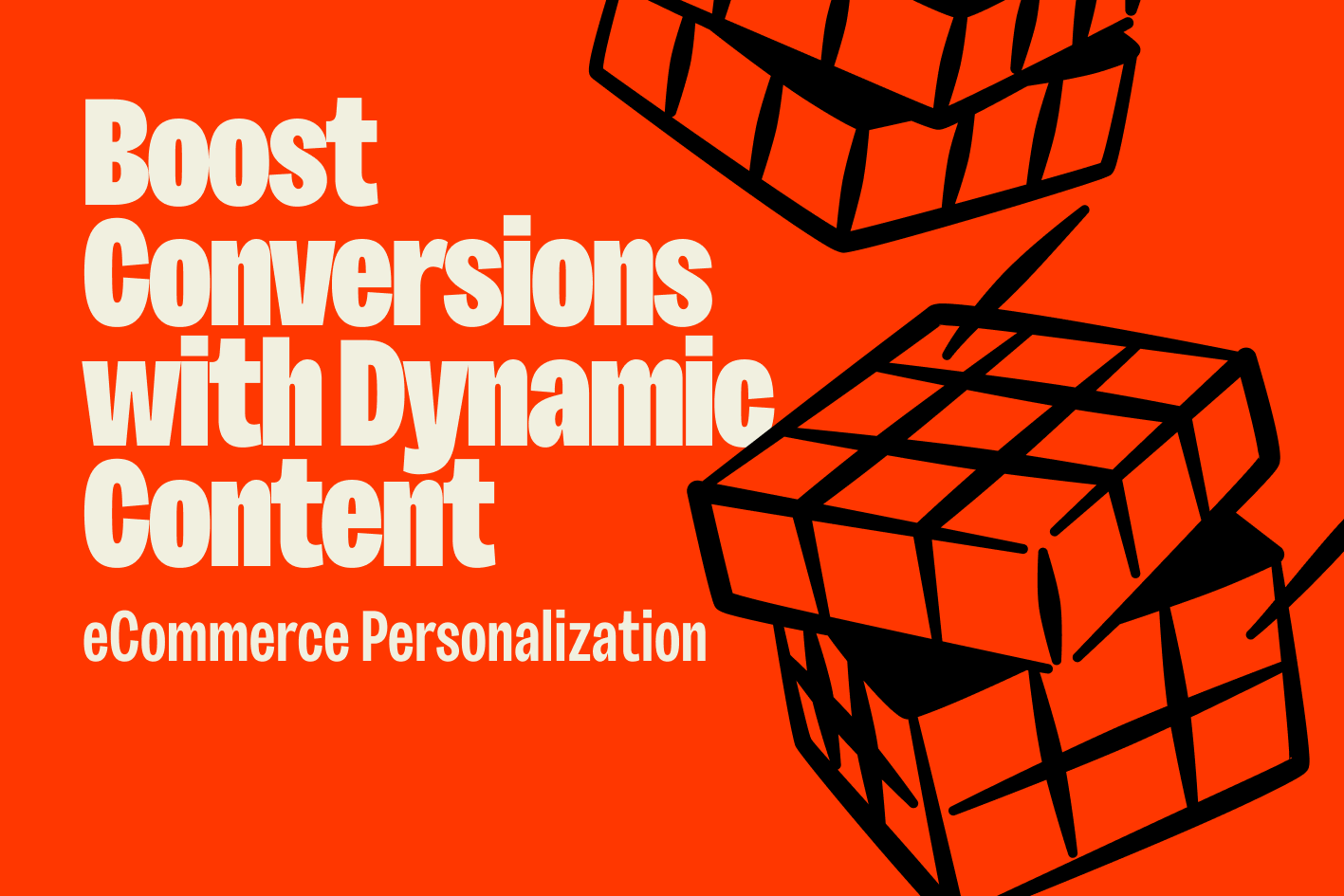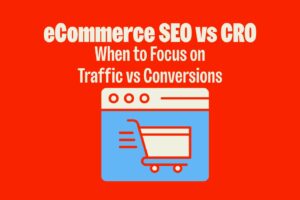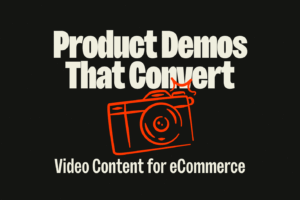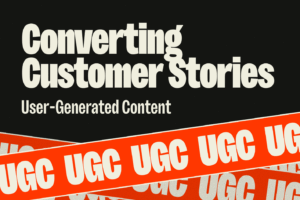eCommerce personalization has evolved from a luxury feature to an essential conversion optimization strategy. With 74% of customers expressing frustration with non-personalized shopping experiences and personalized experiences delivering an average 19% sales increase, dynamic content adaptation is no longer optional for competitive eCommerce brands. Recent ecommerce personalization statistics show that brands using advanced personalization see significant improvements in both sales and customer engagement.
Modern shoppers expect websites to understand their preferences, remember their browsing history, and present relevant products and content. Businesses that implement effective personalization strategies see an average return of $20 for every dollar invested, making it one of the highest-ROI conversion optimization tactics available in 2025. Ecommerce personalization also provides a competitive advantage for brands that leverage AI and analytics to deliver tailored experiences.
Business leaders increasingly view AI-driven personalization as essential for future ecommerce success.
This comprehensive guide covers proven personalization strategies, implementation frameworks for different business sizes, and measurement approaches that turn anonymous browsers into loyal, high-value customers.
Table of Contents
What is eCommerce Personalization and Why Personalized Shopping Experiences Matter
Definition and Core Components
eCommerce personalization refers to the dynamic adaptation of website content, product recommendations, and user experiences based on individual customer data and behavioral patterns. Modern personalization systems combine multiple data sources, and by analyzing data such as customer demographics, online activity, and shopping behavior, they create unique shopping experiences for each visitor.
Core personalization components include:
- Real-time behavioral tracking: Mouse movements, scroll patterns, and click behavior analysis
- Purchase history integration: Past buying patterns and preferences influence future recommendations
- Demographic and psychographic targeting: Age, location, interests, and lifestyle data application
- Cross-device recognition: Unified experiences across mobile, tablet, and desktop interactions
- Contextual adaptation: Time-based, weather-influenced, and seasonal content adjustments
Business Impact Statistics
Recent industry research demonstrates the significant impact of personalization on eCommerce performance:
- 19% average sales increase for businesses implementing comprehensive personalization strategies (McKinsey 2025)
- 35% higher conversion rates for brands using AI-driven recommendation engines
- 74% customer frustration rate with generic, non-personalized shopping experiences
- $20 return on investment for every dollar spent on personalization technology
- 47% increase in customer lifetime value for brands with advanced personalization systems
The data clearly shows that personalization is not just about improving user experience—it’s a critical revenue driver that directly impacts bottom-line business results.
Understanding the Customer Journey in eCommerce Personalization
The customer journey is at the heart of effective ecommerce personalization, guiding how businesses interact with shoppers at every stage of their online shopping experience. By closely analyzing customer behavior—such as browsing history, purchase history, and engagement with various touchpoints—businesses can uncover valuable insights into individual preferences and needs. This customer data forms the foundation for tailoring online shopping experiences that feel intuitive and relevant to each visitor.
Personalization strategies that map the customer journey allow ecommerce brands to deliver customized promotions, tailored discounts, and personalized customer service at precisely the right moments. For example, a shopper who frequently browses a specific category but hasn’t made a purchase can be targeted with a special offer or relevant content that addresses their interests. Similarly, understanding the path from initial discovery to repeat purchases enables businesses to design marketing campaigns that nurture customer relationships and drive loyalty.
By leveraging customer data to inform every interaction, ecommerce businesses can create seamless, personalized shopping experiences that boost customer satisfaction and encourage repeat purchases. Ultimately, a deep understanding of the customer journey empowers brands to deliver the right message, at the right time, to the right individual—transforming casual browsers into loyal customers and maximizing the impact of every personalization effort.
7 Types of eCommerce Personalization That Drive Conversions and Customer Loyalty

Current ecommerce personalization trends are shaping how brands drive conversions by leveraging targeted segmentation, machine learning, and AI to deliver more relevant shopping experiences.
1. Product Recommendations
Product recommendations represent the most impactful form of eCommerce personalization, typically generating 10-30% of total website revenue for optimized implementations.
Collaborative filtering algorithms analyze customer behavior patterns to suggest products based on similar user preferences. Amazon’s “Customers who bought this also bought” approach has become the industry standard, but modern implementations go far deeper.
Strategic recommendation placement opportunities:
- Homepage hero sections: Featured product carousels based on browsing history
- Product page cross-sells: Complementary items that enhance primary purchases
- Cart page upsells: Higher-value alternatives or bundle opportunities
- Post-purchase recommendations: Follow-up products for repeat purchase encouragement
Advanced recommendation strategies include seasonal adjustment algorithms, inventory-aware suggestions, and profit-margin optimization that balances customer satisfaction with business objectives.
Enhance your product recommendation strategy with insights from our Product Page Optimization: Convert Browsers to Buyers guide.
2. Dynamic Content Blocks
Dynamic content adaptation allows websites to present different messaging, imagery, and offers based on customer segments and individual behavior patterns. By delivering relevant content through dynamic blocks, ecommerce sites can increase engagement and conversions by tailoring recommendations, offers, and support to each visitor.
Homepage personalization strategies:
- New visitor welcome experiences: Simplified navigation and educational content for first-time visitors
- Returning customer customization: Personalized hero banners featuring previously viewed categories
- Seasonal and promotional targeting: Weather-based product suggestions and location-specific offers
Category page personalization includes sorting algorithms that prioritize products based on individual preferences, personalized filtering options, and customized promotional banners that reflect purchase history.
Content personalization best practices focus on subtle customization that feels helpful rather than invasive, with clear value propositions for data sharing and transparent preference controls.
3. Personalized Email Campaigns
Email personalization extends beyond basic name insertion to include sophisticated behavioral trigger campaigns and dynamic content adaptation.
Abandoned cart recovery sequences represent the highest-ROI email personalization opportunity, with proper implementation recovering 15-25% of abandoned purchases. Advanced sequences include product-specific messaging, personalized discount offers, and social proof elements. These campaigns can be tailored specifically to engage new customers, using targeted messaging and exclusive incentives to encourage their first purchase and make them feel valued.
Behavioral email triggers include browse abandonment campaigns, purchase anniversary reminders, and restock notifications that leverage individual customer data for maximum relevance.
Segmented newsletter strategies move beyond demographic segmentation to include behavioral cohorts, purchase history groupings, and engagement-level customization that delivers more relevant content to each subscriber segment.
4. Price and Promotion Personalization
Dynamic pricing and personalized promotions require careful implementation to maintain customer trust while optimizing revenue and conversion rates.
Personalized discount strategies include loyalty tier pricing, purchase history-based offers, and behavioral trigger promotions that reward specific customer actions. Personalized offers are highly effective in increasing conversion rates and customer satisfaction, as tailored deals and recommendations are valued by consumers. The key is providing clear value propositions that justify different pricing approaches.
Dynamic pricing considerations must balance revenue optimization with customer satisfaction. Successful implementations focus on bundle offers, volume discounts, and loyalty rewards rather than arbitrary price adjustments.
Promotional personalization includes limited-time offers based on browsing behavior, category-specific discounts for interested customers, and exclusive access promotions that make customers feel valued.
5. Search Result Customization
Personalized search experiences help customers find relevant products faster while improving overall site conversion rates. By delivering personalized search results, ecommerce sites can enhance customer engagement, foster loyalty, and create a smoother, more successful shopping journey.
Search history integration allows search algorithms to weight previous queries and clicked results, creating more relevant product rankings for individual users. This approach reduces search abandonment and improves product discovery.
Location-based search customization includes inventory availability display, shipping cost integration, and regional preference weighting that shows locally popular products higher in search results.
Preference-driven search filtering learns from customer behavior to suggest relevant filters, remember preferred sorting options, and highlight products that match established preferences.
6. Content Personalization
Educational and lifestyle content personalization helps build customer relationships while driving product discovery and brand loyalty.
Blog article recommendations based on browsing behavior and purchase history help customers discover relevant content that supports their shopping journey. Fashion brands might suggest styling tips, while electronics retailers provide setup guides.
Educational content targeting includes how-to guides, comparison articles, and product education materials that match customer interests and purchase consideration stages.
User-generated content curation personalizes social proof by showing reviews, photos, and testimonials from similar customers or previous purchasers, increasing trust and purchase confidence.
Learn more about leveraging customer content in our User-Generated Content: Converting Customer Stories guide.
7. Navigation and UI Adaptation
A flexible ecommerce site enables effective navigation and UI personalization, which significantly improves customer engagement.
Personalized user interface elements help customers navigate more efficiently while reducing friction in the shopping experience.
Menu customization includes highlighting frequently browsed categories, featuring relevant promotions, and simplifying navigation based on individual user behavior patterns.
Checkout flow optimization personalizes payment options, shipping preferences, and form completion based on previous purchase behavior and customer segment characteristics.
Mobile experience personalization adapts interface elements, content density, and interaction patterns based on device preferences and usage patterns.
Enhancing Customer Experience Through Personalization
Personalization is a powerful tool for elevating the customer experience in ecommerce, enabling brands to deliver relevant content, tailored discounts, and customized promotions that resonate with individual shoppers. By harnessing customer data—such as browsing behavior and purchase history—businesses can craft personalized shopping experiences that drive higher customer engagement and improved conversion rates.
Effective personalization strategies go beyond surface-level recommendations. They involve analyzing customer behavior and preferences to anticipate needs and present relevant products at every stage of the shopping journey. For instance, machine learning algorithms can predict which items a customer is most likely to purchase next, allowing for dynamic product suggestions and timely offers that feel genuinely helpful.
Personalized marketing, including targeted email campaigns and social media ads, further enhances the customer experience by reaching high value customers with messages and promotions tailored to their interests. This approach not only increases the likelihood of conversion but also fosters a sense of connection and trust between the customer and the brand.
By consistently delivering customized promotions, relevant content, and seamless shopping experiences, ecommerce businesses can meet the unique needs of each customer. The result is a more intuitive, enjoyable, and satisfying online shopping experience that keeps customers coming back for more.
Implementation Strategies for Different Business Sizes

When it comes to implementing personalization, the right approach depends on your business’s size, resources, and goals. Developing a tailored ecommerce personalization strategy is crucial at every stage, ensuring that your efforts are aligned with your company’s current capabilities and future growth plans.
Startup/Small Business Approach ($0-$1M Revenue)
Small businesses should focus on high-impact, low-complexity personalization strategies that deliver immediate ROI without significant technical investment. By using personalization, small businesses can grow and engage their customer base, fostering loyalty and increasing repeat purchases.
Email segmentation priorities:
- Purchase behavior segments: First-time buyers, repeat customers, high-value shoppers
- Engagement level groups: Active subscribers, occasional openers, inactive segments
- Product interest categories: Based on browsing and purchase history data
Basic product recommendation implementation using platform-native features or affordable apps provides immediate conversion improvements. Shopify stores can implement Product Recommendations apps, while WooCommerce sites can use plugins like WooCommerce Product Recommendations.
Manual customer segmentation based on purchase behavior allows for targeted email campaigns and personalized customer service approaches that build relationships without requiring advanced technology.
Mid-Size Business Implementation ($1M-$10M Revenue)
Mid-size businesses have the traffic volume and resources to implement more sophisticated personalization strategies with measurable impact.
Advanced analytics integration with customer data platforms enables cross-channel personalization and more sophisticated behavioral tracking. Platforms like Segment or Klaviyo provide comprehensive data unification capabilities. Selecting a robust ecommerce platform is essential to effectively integrate first-party data and support advanced personalization efforts.
Multi-channel personalization coordination includes email, website, social media advertising, and customer service integration that creates consistent experiences across all touchpoints.
A/B testing personalization elements allows for data-driven optimization of recommendation algorithms, content personalization strategies, and promotional targeting approaches.
Enterprise-Level Personalization ($10M+ Revenue)
Enterprise businesses should implement comprehensive personalization ecosystems that leverage artificial intelligence and real-time behavioral targeting. These enterprise-level systems are designed to deliver tailored experiences to individual customers at scale by analyzing their preferences, behaviors, and demographics.
AI-driven recommendation systems using machine learning algorithms analyze complex behavioral patterns and provide sophisticated product suggestions that evolve with customer preferences.
Real-time behavioral targeting enables instant content adaptation based on current session behavior, creating dynamic experiences that respond to customer intent signals.
Omnichannel experience coordination unifies personalization across all customer touchpoints, including in-store experiences, mobile apps, customer service interactions, and marketing communications.
Popular Personalization Platforms
An ecommerce personalization platform is a specialized technology solution that enables real-time personalization for online stores, helping businesses deliver tailored shopping experiences, improve product recommendations, and boost conversion rates.
Dynamic Yield offers comprehensive personalization capabilities including recommendation engines, A/B testing, and cross-channel campaign management. Pricing starts at $1,000/month for mid-market implementations.
Optimizely provides robust experimentation capabilities with personalization features, making it ideal for businesses that want to test personalization strategies rigorously. Enterprise pricing typically ranges from $2,000-$10,000/month.
VWO combines conversion optimization with personalization features, offering an affordable entry point for businesses starting personalization initiatives. Plans begin at $199/month for basic features.
Shopify personalization apps include LimeSpot ($49-$999/month), Product Recommendations (free), and Bold Product Upsell ($29.99/month) that provide platform-specific optimization without custom development requirements.
Analytics and Customer Data Requirements
Customer data platform setup requires integration of website analytics, email marketing data, purchase history, and customer service interactions to create comprehensive customer profiles.
Behavioral tracking implementation using tools like Hotjar, FullStory, or LogRocket provides the granular user behavior data necessary for effective personalization algorithms.
Performance measurement frameworks must track personalization impact across multiple KPIs including conversion rates, average order value, customer lifetime value, and engagement metrics.
Building Customer Loyalty with Personalization
Building and maintaining customer loyalty is essential for long-term ecommerce success, and personalization is a key driver in this process. By offering personalized shopping experiences and tailored discounts, businesses can significantly increase customer satisfaction and encourage repeat purchases. Personalized customer service—such as customized promotions, exclusive offers, and responsive support—helps create a sense of value and appreciation that strengthens customer relationships.
Personalization strategies that leverage customer behavior and preferences enable brands to deliver relevant content and marketing campaigns that resonate with specific customer segments. Through customer segmentation, businesses can identify high value customers and reward them with loyalty programs, special incentives, and targeted communications that reinforce brand loyalty.
Loyalty programs that incorporate personalized rewards and exclusive benefits not only incentivize repeat purchases but also foster a deeper emotional connection with the brand. By consistently delivering customized promotions and tailored discounts, ecommerce businesses can turn satisfied shoppers into loyal customers who advocate for the brand and contribute to sustained revenue growth.
Ultimately, prioritizing personalization and customer loyalty ensures that every interaction feels meaningful and relevant, driving higher customer retention and long-term business success.
Common Personalization Mistakes and How to Avoid Them
Over-Personalization and Privacy Concerns
The balance between helpful personalization and invasive tracking requires careful consideration of customer comfort levels and clear value propositions for data sharing.
Privacy compliance best practices include transparent data collection notices, granular consent options, and easy-to-access preference management interfaces that give customers control over their personalization experience.
GDPR and privacy regulation compliance requires explicit consent for behavioral tracking, clear data usage explanations, and the ability for customers to opt-out of personalization without losing core functionality.
Poor Data Quality Impact
Data cleansing importance cannot be overstated—inaccurate customer data leads to irrelevant personalization that frustrates customers rather than helping them. Regular data auditing and quality assurance processes ensure personalization accuracy.
Integration challenges between different data sources often create incomplete customer profiles that limit personalization effectiveness. Comprehensive data unification strategies prevent these issues.
Lack of Testing and Optimization
A/B testing personalized vs. generic experiences provides the data necessary to justify personalization investments and optimize implementation strategies.
Statistical significance requirements for personalization tests often require longer testing periods and larger sample sizes than standard A/B tests due to the complexity of personalized experiences.
Build customer trust with personalization using insights from our Trust Signals for eCommerce: Building Customer Confidence guide.
Measuring Personalization Success

When measuring the success of ecommerce personalization, it’s important to track key performance indicators that reflect both customer engagement and business growth. One crucial metric is higher average order value, which effective personalization strategies can help achieve by encouraging customers to purchase more or choose premium products. By monitoring these metrics, you can better understand the impact of your personalization efforts and make data-driven decisions for future improvements.
Key Performance Indicators
Conversion rate improvements should be measured by personalized segment to understand which personalization strategies deliver the highest impact. Typical improvements range from 15-35% depending on implementation sophistication.
Average order value increases through personalized recommendations and upselling typically show 10-25% improvements for well-implemented systems.
Customer lifetime value impact represents the long-term benefit of personalization, with successful implementations showing 20-50% CLV increases over 12-24 month periods. Personalization also leads to higher customer satisfaction, which further drives long-term business growth.
Testing Methodologies
Control group setup for personalization impact measurement requires careful consideration of sample sizes and testing duration to account for the learning period required for personalization algorithms.
Statistical significance thresholds should account for the complexity of personalized experiences and the multiple variables being tested simultaneously.
Long-term performance tracking beyond initial implementation helps identify optimization opportunities and ensures personalization strategies continue delivering value over time.
ROI and Average Order Value Calculation Framework
Implementation cost analysis must include technology costs, development resources, ongoing optimization efforts, and data infrastructure requirements for comprehensive ROI calculation.
Revenue increase attribution requires sophisticated analytics to separate personalization impact from other optimization efforts and seasonal variations.
Customer satisfaction measurement through surveys, Net Promoter Score tracking, and qualitative feedback helps ensure personalization improvements enhance rather than detract from user experience.
Enhance your personalization efforts with engaging visual content using our Video Content for eCommerce: Product Demos That Convert guide.
Conclusion
eCommerce personalization represents one of the most effective conversion optimization strategies available to modern online retailers. Delivering a personalized experience is key to meeting the expectations of today’s online shoppers, who increasingly demand tailored interactions and recommendations. With average ROI of $20 for every dollar invested and the potential for 19-35% conversion rate improvements, personalization is no longer optional for competitive eCommerce success.
The key to successful personalization lies in matching implementation complexity with business size and resources while maintaining focus on customer value and privacy. Start with high-impact, low-complexity strategies like email segmentation and basic product recommendations before advancing to sophisticated AI-driven personalization systems.
Success requires ongoing optimization, careful measurement, and continuous refinement based on customer feedback and performance data. Businesses that approach personalization strategically and iteratively see the most sustainable results and highest customer satisfaction.
Ready to implement personalization that drives real results? Contact Glued for a free personalization strategy assessment where we’ll analyze your current setup and recommend optimization strategies that deliver measurable conversion improvements.
Frequently Asked Questions
Q: How much can personalization improve my conversion rates? A: Average improvement ranges from 19% sales increase for basic implementations to 35% for advanced AI-driven personalization. Results vary by industry: fashion brands typically see 25%+ improvements, electronics retailers achieve 15-20% increases, and health/beauty brands often reach 20-30% conversion improvements.
Q: What’s the minimum traffic needed for effective personalization? A: Basic email personalization can benefit any size business immediately. Website personalization requires 1,000+ monthly visitors for meaningful impact, while advanced AI personalization needs 10,000+ monthly visitors for statistical significance. Start with email segmentation regardless of traffic volume.
Q: How long does it take to implement eCommerce personalization? A: Implementation timeline varies by complexity: basic email segmentation takes 1-2 weeks, product recommendation systems require 4-6 weeks, and comprehensive AI personalization needs 3-6 months for full deployment. ROI typically becomes positive within 30-90 days of proper implementation.
Q: Is personalization worth it for small eCommerce businesses? A: Yes—start with email personalization and basic product recommendations that deliver positive ROI within 30-60 days. Focus on high-impact, low-complexity strategies first, then expand as traffic and resources grow. Even basic personalization significantly outperforms generic experiences.
Q: How do I avoid being “creepy” with personalization? A: Always provide clear value in exchange for data usage, be transparent about data collection practices, and give customers control over personalization preferences. Focus on helpful rather than invasive personalization, avoid referencing overly specific behaviors, and respect customer privacy preferences.
How much can personalization improve my conversion rates?
Average improvement ranges from 19% sales increase for basic implementations to 35% for advanced AI-driven personalization. Results vary by industry: fashion brands typically see 25%+ improvements, electronics retailers achieve 15-20% increases, and health/beauty brands often reach 20-30% conversion improvements.
What’s the minimum traffic needed for effective personalization?
asic email personalization can benefit any size business immediately. Website personalization requires 1,000+ monthly visitors for meaningful impact, while advanced AI personalization needs 10,000+ monthly visitors for statistical significance. Start with email segmentation regardless of traffic volume.
How long does it take to implement eCommerce personalization?
Implementation timeline varies by complexity: basic email segmentation takes 1-2 weeks, product recommendation systems require 4-6 weeks, and comprehensive AI personalization needs 3-6 months for full deployment. ROI typically becomes positive within 30-90 days of proper implementation.
Is personalization worth it for small eCommerce businesses?
es—start with email personalization and basic product recommendations that deliver positive ROI within 30-60 days. Focus on high-impact, low-complexity strategies first, then expand as traffic and resources grow. Even basic personalization significantly outperforms generic experiences.
How do I avoid being “creepy” with personalization?
Always provide clear value in exchange for data usage, be transparent about data collection practices, and give customers control over personalization preferences. Focus on helpful rather than invasive personalization, avoid referencing overly specific behaviors, and respect customer privacy preferences.
How to Implement Basic eCommerce Personalization
- Set up email segmentation based on purchase behavior, demographics, and engagement levels
- Install product recommendation widgets on homepage, product pages, and checkout flow
- Create dynamic content blocks for returning visitors with personalized hero banners and promotions
- Implement personalized email automation sequences for abandoned cart recovery and browse abandonment
- Measure performance regularly and optimize based on conversion data and customer feedback





